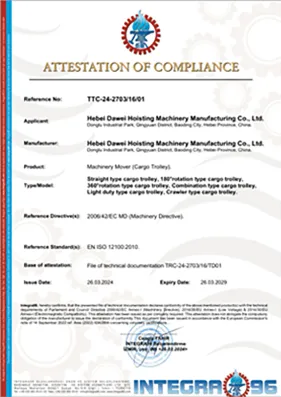Small Yet Powerful Lifting Magnets for Versatile Heavy-Duty Applications
Small Lifting Magnets Compact Powerhouses for Various Applications
In today’s fast-paced and ever-evolving industrial landscape, small lifting magnets have emerged as indispensable tools for a variety of applications. These compact yet powerful devices offer excellent solutions for lifting, moving, and handling heavy materials effortlessly. In this article, we will delve into the functionality, applications, and benefits of small lifting magnets, highlighting why they are increasingly becoming a preferred choice in numerous fields.
What are Small Lifting Magnets?
Small lifting magnets are essentially magnets designed to lift ferromagnetic materials like steel and iron. They come in various shapes and sizes, but their primary function remains the same – to lift and transport heavy objects securely and efficiently. Unlike traditional cranes, slings, and other lifting equipment, small lifting magnets provide a unique advantage due to their simplicity, portability, and ease of use.
How Do They Work?
The operating principle of small lifting magnets is based on magnetism. These devices typically use a permanent magnet or electromagnet mechanism. Permanent magnets generate a magnetic field on their own, whereas electromagnets require electrical power to create a magnetic field. When the magnet is activated and comes into contact with a ferromagnetic object, it generates enough magnetic force to securely adhere to and lift the material.
Applications of Small Lifting Magnets
The versatility of small lifting magnets makes them suitable for a wide range of applications across various industries
1. Manufacturing In manufacturing settings, small lifting magnets are used to move metal sheets and components during assembly processes. They streamline operations by allowing workers to handle larger parts more safely and efficiently.
2. Construction In construction sites, these magnets facilitate the movement of steel beams, reinforcements, and other heavy materials. Their compact size enables operators to maneuver in tight spaces where traditional cranes cannot operate effectively.
3. Warehousing Small lifting magnets can be instrumental in warehouses for handling metal pallets, containers, and other heavy materials. They minimize the risk of injuries and maximize productivity by allowing workers to lift objects with ease.
small lifting magnets

4. Automotive Industry Within the automotive sector, these magnets are used for automating the transport of parts and assemblies. They aid in increasing throughput while maintaining safety standards on assembly lines.
5. Metal Recycling In the recycling industry, small lifting magnets play a crucial role in separating ferrous metals from non-ferrous materials, thereby enhancing the efficiency of the recycling process.
Benefits of Using Small Lifting Magnets
The advantages of small lifting magnets are manifold
- Safety Using lifting magnets significantly reduces the risk of workplace accidents associated with manual lifting and handling, as they help distribute weight evenly and provide a secure grip.
- Efficiency These magnets enhance productivity by speeding up material handling processes, allowing for quicker and more efficient movements.
- Portability The compact design of small lifting magnets allows for easy transportation and setup, making them ideal for dynamic job sites or locations with limited space.
- Cost-Effectiveness Investing in small lifting magnets can lead to long-term cost savings. They reduce the need for heavy machinery and minimize labor costs associated with manual material handling.
Conclusion
Small lifting magnets are revolutionizing how industries approach material handling. Their ability to lift heavy ferromagnetic loads with ease, combined with their safety, efficiency, and portability, makes them a vital tool in modern-day applications. As industries continue to seek ways to improve processes, reduce costs, and increase safety, the demand for small lifting magnets is set to grow, solidifying their position as compact powerhouses in the realm of lifting technology.
Incorporating these innovative devices into various operations not only enhances productivity but also reflects a commitment to leveraging technology for a safer, more efficient industrial environment.
-
Unlock Seamless Relocation with Our Heavy Equipment Moving ExpertiseNewsJun.06,2025
-
Unleash Unrivaled Flexibility with Our Adjustable Gantry CraneNewsJun.06,2025
-
Unleash Heavy-Duty Efficiency with Our Industrial Gantry Crane SolutionsNewsJun.06,2025
-
Revolutionize Steel Handling with Our Magnetic Lifter RangeNewsJun.06,2025
-
Master Equipment Mobility with Premium Machinery Mover SolutionsNewsJun.06,2025
-
Elevate Your Material Handling with Magnetic Lifter TechnologyNewsJun.06,2025
-
YS Permanent Lifting Magnets: The Smarter Way to Handle SteelNewsMay.22,2025
